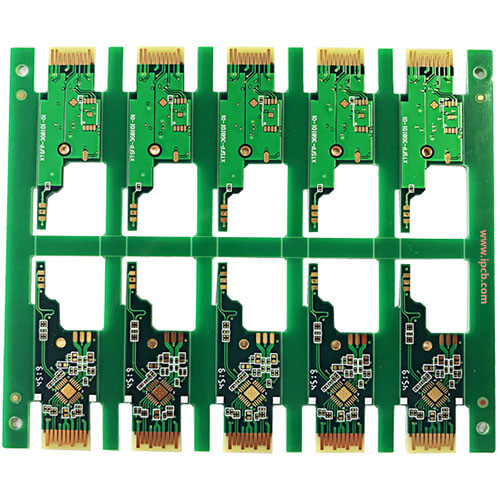With the decrease of the signal rising time and the increase of signal frequency, the EMI problem of electronic products has attracted more and more attention from electronic engineers. With the success of high-speed PCB design, more and more attention has been paid to its contribution to EMI. Almost 60% of EMI problems can be controlled and solved by high-speed PCB.

Rule 1: Decoupling capacitor placement rules for devices
The location of the decoupling capacitor is very important. Unreasonable placement will not have the effect of decoupling at all. The principle of placing decoupling capacitors is: close to the pins of the power supply, and the area enclosed by the power traces and ground wires of the capacitors is the smallest.
Rule 2: High-speed signal routing shielding rules
In high-speed PCB design, key high-speed signal lines such as clocks need to be shielded. If they are not shielded or only partially shielded, they will cause EMI leakage. It is recommended that the shielded wire be grounded with a hole per 1000 mil.
Rule 3: Closed-loop routing rules for high-speed signals
As the density of PCB boards is getting higher and higher, many PCB Layout engineers are prone to such mistakes in the process of routing. High-speed signal networks such as clock signals produce closed-loop results when multi-layer PCBs are routed. Such closed-loop results will produce loop antennas and increase EMI radiation intensity.
Rule 4: Open-loop routing rules for high-speed signals
Rule 3 mentions that the closed loop of high-speed signals will cause EMI radiation, and the same open loop will also cause EMI radiation.
High-speed signal networks such as clock signals produce open-loop results when multi-layer PCBs are routed. Such open-loop results will produce linear antennas and increase EMI radiation intensity. We should also avoid it in design.
Rule 5: Wiring direction rules for high-speed PCB design
The wiring between two adjacent layers must follow the principle of vertical wiring, otherwise it will cause crosstalk between lines and increase EMI radiation. Adjacent wiring layers follow the horizontal and vertical wiring direction. Vertical wiring can suppress crosstalk between lines .
Rule 6: The characteristic impedance continuity rule of high-speed signal
For high-speed signals, the characteristic impedance must be continuous when switching between layers, otherwise it will increase EMI radiation, that is, the width of the wiring on the same layer must be continuous, and the wiring impedance of different layers must be continuous.
Rule 7: Return path rules
All high-speed signals must have a good return path. It is nearly possible to ensure that the return path of high-speed signals such as clocks is minimized. Otherwise it will greatly increase the radiation, and the size of the radiation is proportional to the area enclosed by the signal path and the return path.
Rule 8: Topological structure rules in high-speed PCB design
There are two most important contents in high-speed PCB design, which are the control of the characteristic impedance of the circuit board and the design of the topology in the case of multiple loads. In the case of high speed, it can be said that whether the topology is reasonable or not directly determines the success or failure of the product.
Rule 9: Resonance rule of trace length
Check whether the length of the signal line and the frequency of the signal constitute resonance, that is, when the length of the wiring is an integer multiple of the signal wavelength 1/4, the wiring will resonate, and the resonance will radiate electromagnetic waves and cause interference.